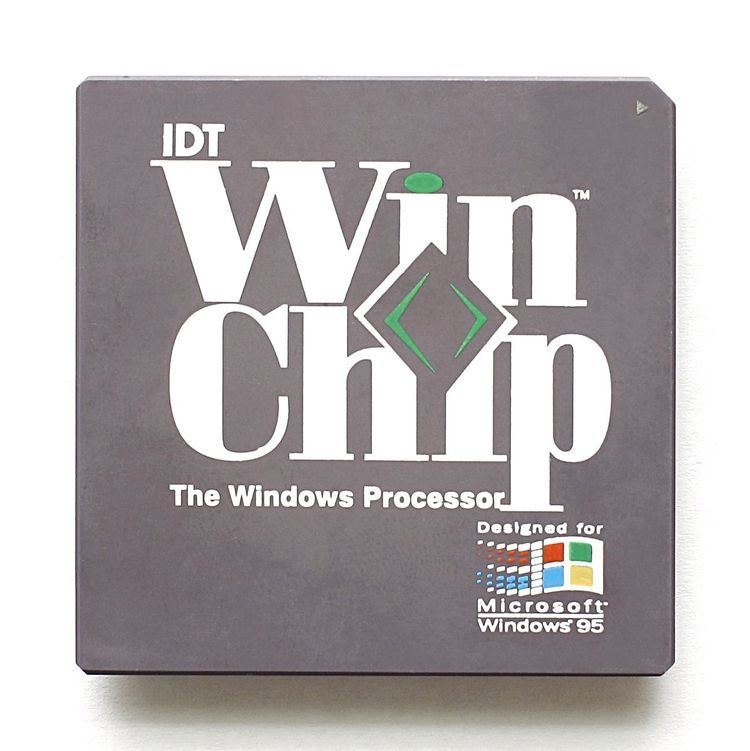Produced From 1997 to 1999 FSB speeds 60 MT/s to 100 MT/s | Marketed by IDT Max. CPU clock rate 180 Mhz to 266 Mhz Min. feature size 0.35 µm to 0.25 µm | |
 | ||
The WinChip series was a low-power Socket 7-based x86 processor designed by Centaur Technology and marketed by its parent company IDT.
Contents
Design
The design of the WinChip was quite different from other processors of the time. Instead of a large gate count and die area, IDT, using its experience from the RISC processor market, created a small and electrically efficient processor similar to the 80486, because of its single pipeline and in-order execution microarchitecture. It was of much simpler design than its Socket 7 competitors, such as AMD K5/K6 and Intel Pentium, which were superscalar and based on dynamic translation to buffered micro-operations with advanced instruction reordering (out of order execution).
Use
WinChip was, in general, designed to perform well with popular applications that didn't do many (if any) floating point calculations. This included operating systems of the time and the majority of software used in businesses. It was also designed to be a drop-in replacement for the more complex, and thus more expensive, processors it was competing with. This allowed IDT/Centaur to take advantage of an established system platform (Intel's Socket 7).
Development
The WinChip 2A added fractional multipliers and adopted a 100 MHz front side bus to improve memory access and L2 cache performance. It also adopted a performance rating nomenclature instead of reporting the real clock speed, similar to contemporary AMD and Cyrix processors.
Another revision, the WinChip 2B, was also planned. This featured a die shrink to 0.25 μm, but was only shipped in limited numbers.
A third model, the WinChip 3, was planned as well. This was meant to receive a doubled L1 cache, but the W3 CPU never made it to market.
Performance
Although the small die size and low power-usage made the processor notably inexpensive to manufacture, it never gained much market share. WinChip C6 was a competitor to the Intel Pentium and Pentium MMX, Cyrix 6x86, and AMD K5/K6. It performed adequately, but only in applications that used little floating point math. Its floating point performance was simply well below that of the Pentium and K6, being even slower than the Cyrix 6x86.
The WinChip2 was revised to strengthen floating point performance considerably, being over 50% faster than its predecessor in certain fpu-related benchmarks. it also added a 3DNow! processing unit making it the only non-AMD cpu on socket7 to support 3DNow! instructions. Nevertheless, it's still quite a bit slower than AMD K6-2 in most aspects and, more importantly, couldn't clock remotely as high as the K6-2. This successor targeted the Intel Pentium II, Cyrix MII, and AMD K6-2 processors as competitors.
Decline
The industry's move away from Socket 7 and the release of the Intel Celeron processor signalled the end of the WinChip. In 1999, the Centaur Technology division of IDT was sold to VIA. Although VIA branded the processors as "Cyrix," the company initially used technology similar to the WinChip in its Cyrix III line.
